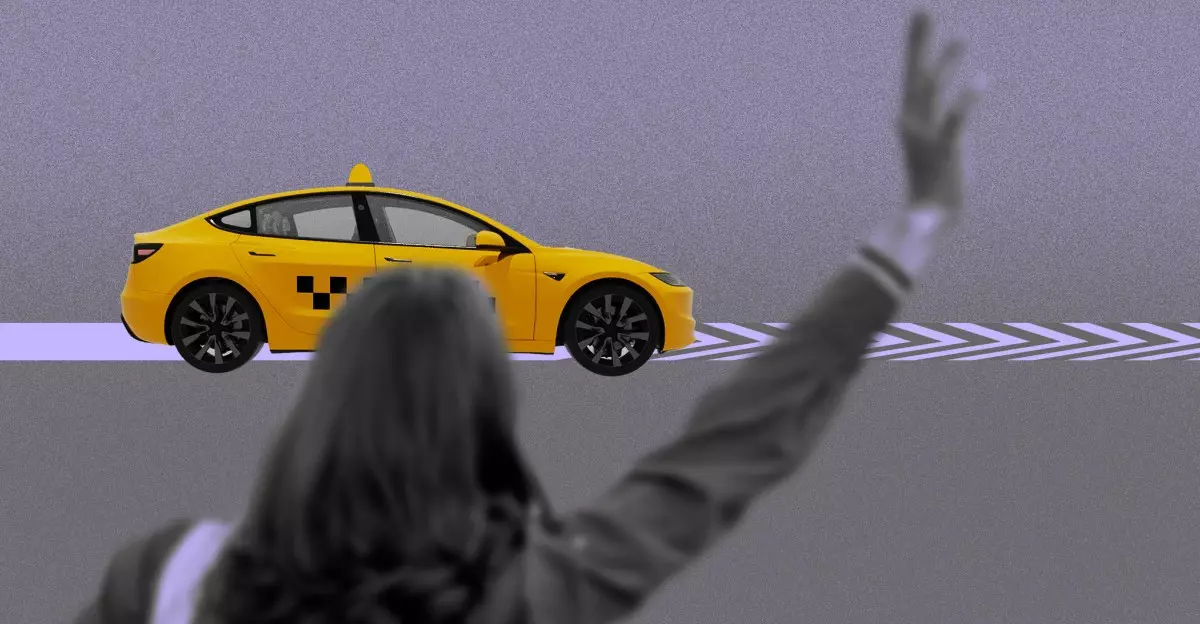Tesla might be pioneering electric vehicles, but its handling of media and public relations is a study in contradiction. In recent events, especially surrounding the much-anticipated rollout of their robotaxis in Austin, Texas, the company’s approach to communication has become as controversial as its products. Instead of allowing comprehensive media coverage, Tesla has embraced a new approach—courting a network of devoted influencers while shunning traditional journalism. This has turned the narrative into a warped reflection of reality, blurring the lines between genuine acceptance and orchestrated adoration.
By fostering a loyal legion of influencers, Tesla has managed to build a community that values loyalty over scrutiny. Only Tesla’s chosen “superfans” were afforded access to the rollout event, leaving professional journalists outside the gates. This exclusivity fed a narrative of unity among followers, where dissent or skepticism from the media is not just dismissed but actively ridiculed. This begs the question: is this a legitimate celebration of innovation or a cleverly designed public relations façade?
The Impact of Echo Chambers
Digital platforms have allowed for the rapid dissemination of information, albeit often within tightly-knit echo chambers. Influencers like Kim Java, who boasts hundreds of thousands of followers on YouTube, are increasingly claiming control of their narratives, leveraging their platforms to showcase Tesla’s vision free from media interference. The phrase “we are the media now” rings hollow against the backdrop of what can be characterized as corporate propaganda.
The loyalty of Tesla’s fans appears to be cultivated through both a shared vision of revolutionary technology and, significantly, tangible rewards. These incentives can be as minor as discounts or referral bonuses, but they are potent motivators in maintaining a chorus of positive reinforcement online. The proliferation of Tesla-related positivity can create an environment that stifles critical dialogue, insulating the company from legitimate scrutiny that could foster growth and apprehension about its products.
An Unhealthy Relationship with the Media
Elon Musk’s contentious relationship with traditional media is notorious, characterized by a history of digital antagonism. By decimating the public relations team and selectively engaging with enthusiastic supporters, Tesla has established a model that alienates critical viewpoints while promoting a fanatical endorsement of its vision. The rollout of the robotaxi serves as a stark reminder of this trend. Critics argue that this relationship is not just about ignoring scrutiny; it’s about encapsulating a narrative that actively seeks to undermine the credibility of any dissident voices.
Experts have highlighted this shift towards influencer-driven narratives as a textbook example of propagandistic behavior. People are socialized to respond positively to influencers, especially when they engage in shared experiences. When a community cultivates hostility against established media, such as inappropriately mocking them for simply doing their jobs, it creates an unhealthy cycle. This stifling of dissent is not conducive to innovation; it encourages apathy toward legitimate concerns surrounding safety, transparency, and ethics in the development of autonomous technology.
The Dangers of Assumptive Narratives
The allure of the robotaxi’s promises is palpable, yet media cynics warn that the collective narrative must be dissected rather than blindly accepted. Critics, including industry observers who resist the title of “superfan,” underscore the importance of maintaining an objective lens in evaluating emergent technologies. The Tesla model has been hailed as a breath of fresh air in transport; however, the company’s deployment strategy risks transforming critical oversight into unquestioning adulation.
Musk’s PR strategies may yield short-term gains while evading necessary scrutiny today, but what happens when the cracks in the glossy exterior become evident? The paradox is troubling: in striving for a narrative of perfection, the company distorts reality, creating a disconnection that could prove catastrophic if the technology fails to live up to its hype. As Professor Joan Donovan emphasizes, the “corporate propaganda” surrounding robotaxis is not merely a gimmick; it reflects a concerning trajectory for how we engage with potentially transformative technology.
Ensuring Public Credibility
As the fanfare around robotaxis continues to grow, the stakes rise accordingly. For Tesla to achieve its ambitious goal of revolutionizing transportation, the company must eventually allow genuine public engagement that includes critics and independent observers. Creating a sustainable innovation ecosystem necessitates transparency and dialogue that can withstand scrutiny. Without such measures, Tesla risks being ensconced in a bubble, where the inability to address real-world challenges can emerge as detrimental to the company’s foundational goals.
Ultimately, this dilemma serves as a significant lesson in the balance between ambition and authenticity. Without embracing the critical discourse that can only come from open engagement with a diverse range of voices, Tesla may inadvertently undermine the very reputation it seeks to bolster. Navigating this complex landscape is essential not just for Tesla, but for any trailblazer aiming to lead their industry through authentic innovation.

